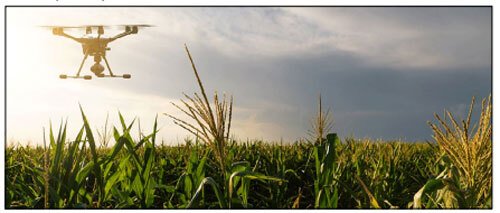K
Kathleen Martin
Guest
Using Smart Agriculture to Solve Issues
Agriculture × advanced technology = smart agriculture: Japanese agriculture is now attempting to open up a new model of agriculture with this equation.
According to the Ministry of Agriculture, Forestry and Fisheries (MAFF), the number of self-employed farmers, decreased from approximately 4 million in 2000 to approximately 2.5 million in 2010. This number further decreased to 1.36 million in 2020. Those aged 65 years and older account for 950,000, or approximately 70%, of that group, with an average age of. Their average age is 67.8 years old. Given the significant decrease in this working population, In the face of this issue of aging with a significant decrease in the agricultural working population, there is an urgent need to make agriculture smart. MAFF started a smart agriculture project in 2019. The ministry has been conducting technology demonstration experiments in 148 regions throughout Japan. It has been using robots, AI, IoT, and other advanced technologies at production sites to ascertain the management effect in an integrated experiment from production to shipping. The ministry is hoping for this to lead to social implementation. Let’s have a look at some examples of smart agriculture.
Utilizing the IoT to Speed Up the Conversion to Selfdriving Tractors
A leading agricultural machinery manufacturer in Japan launched self-driving tractors and robot tractors. Introduced in 2018, both use satellites and fixed base stations. This manufacturer adopted a system in which these auto tractors verify their position with satellites to improve accuracy by adding corrected information from fixed base stations. These auto tractors realize self-driving (self-driving level 1) by automating some steering-wheel operations while the user is on board. This enables high-precision work regardless of the user’s skill level. Meanwhile, the robot tractors run autonomously (selfdriving level 2) under the supervision of the user, enabling unmanned independent work.
It is possible to realize collaborative work in which one person can handle the work of two people by combining this IoTequipped robot tractor (unmanned) with a manned tractor. Moreover, it is possible to perform multiple tasks simultaneously. It is also more efficient since work is not affected by the weather. The unmanned work area when this product was first released was 69% of a field area (range for crop cultivation), specifically 122 × 76 meters. However, this was raised to 72% by expanding the headland (space in which rice planters turn). Furthermore, an outer circumference process was added to boost this percentage to 88%. The manufacturer is striving to reach as close to 100% as possible.
Continue reading: https://www.bisinfotech.com/utilizing-iot-drones-on-the-frontline-of-smart-agriculture/
Agriculture × advanced technology = smart agriculture: Japanese agriculture is now attempting to open up a new model of agriculture with this equation.
According to the Ministry of Agriculture, Forestry and Fisheries (MAFF), the number of self-employed farmers, decreased from approximately 4 million in 2000 to approximately 2.5 million in 2010. This number further decreased to 1.36 million in 2020. Those aged 65 years and older account for 950,000, or approximately 70%, of that group, with an average age of. Their average age is 67.8 years old. Given the significant decrease in this working population, In the face of this issue of aging with a significant decrease in the agricultural working population, there is an urgent need to make agriculture smart. MAFF started a smart agriculture project in 2019. The ministry has been conducting technology demonstration experiments in 148 regions throughout Japan. It has been using robots, AI, IoT, and other advanced technologies at production sites to ascertain the management effect in an integrated experiment from production to shipping. The ministry is hoping for this to lead to social implementation. Let’s have a look at some examples of smart agriculture.
Utilizing the IoT to Speed Up the Conversion to Selfdriving Tractors
A leading agricultural machinery manufacturer in Japan launched self-driving tractors and robot tractors. Introduced in 2018, both use satellites and fixed base stations. This manufacturer adopted a system in which these auto tractors verify their position with satellites to improve accuracy by adding corrected information from fixed base stations. These auto tractors realize self-driving (self-driving level 1) by automating some steering-wheel operations while the user is on board. This enables high-precision work regardless of the user’s skill level. Meanwhile, the robot tractors run autonomously (selfdriving level 2) under the supervision of the user, enabling unmanned independent work.
It is possible to realize collaborative work in which one person can handle the work of two people by combining this IoTequipped robot tractor (unmanned) with a manned tractor. Moreover, it is possible to perform multiple tasks simultaneously. It is also more efficient since work is not affected by the weather. The unmanned work area when this product was first released was 69% of a field area (range for crop cultivation), specifically 122 × 76 meters. However, this was raised to 72% by expanding the headland (space in which rice planters turn). Furthermore, an outer circumference process was added to boost this percentage to 88%. The manufacturer is striving to reach as close to 100% as possible.
Continue reading: https://www.bisinfotech.com/utilizing-iot-drones-on-the-frontline-of-smart-agriculture/

